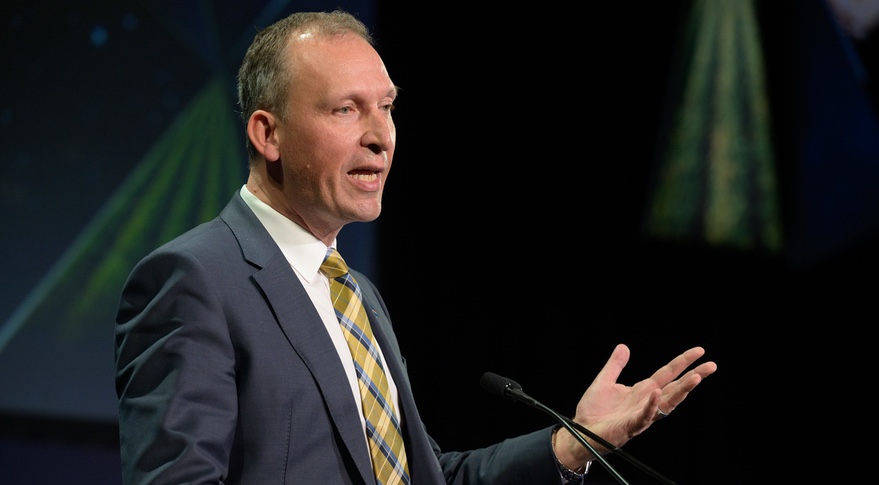WASHINGTON — NASA will commission a small independent study of unidentified aerial phenomena (UAP), a move the agency says is part of its desire to support risky research that has the potential for high payoffs.
The agency announced June 9 it will set up an independent team of researchers who, starting in early fall, will spend about nine months examining what data is available about UAPs and make recommendations on what additional data to collect to better understand the phenomena. A final report will be publicly released at the end of the study.
Sightings of UAPs have attracted considerable attention in recent years, including studies by two groups established by the Defense Department. However, there is no consensus to explain such sightings, primarily by military aviators, with rationales ranging from advanced weapons and extraterrestrial objects to natural phenomena or miscellaneous objects, like balloons.
The goal of the study, said Thomas Zurbuchen, NASA associate administrator for science, in a call with reporters, is to “take a field that is relatively data poor and make it into a field that is much more data rich and therefore worthy of scientific investigation and analysis.”
The study will be chaired by David Spergel, an astrophysicist who is president of the Simons Foundation. “Our plan is to conduct an open inquiry that we hope will advance our understanding so that, when this is done, we at least have a road map of how to move forward,” he said on the call.
He later said the only preconceived notion he had about UAPs going into the study is that the data may be explained by several different phenomena. NASA, in its statement about the study, emphasized that there is “no evidence UAPs are extraterrestrial in origin.”
“Don’t ever underestimate what nature can do,” Zurbuchen said. “Sometimes we have this assertion that we understand the natural world and everything that’s not explained with the laws of nature that we have right now is somehow not natural. I really believe there’s a lot to learn still.”
Dan Evans, assistant deputy associate administrator for research in NASA’s Science Mission Directorate, said the study team will include scientists, aeronautics experts and “data practitioners.” The study, he said, will be set up like committees NASA regularly establishes for reviewing grant proposals, and will have a similar budget that he said is unlikely to exceed $100,000.
With that limited budget and schedule, Evans said the focus will be on identifying existing data and data gaps, rather than finding an explanation or explanations for UAPs. “The first step in any scientific investigation is to figure out what data is at hand,” he said. “We’re not actually going to be, within that budget, analyzing those data directly. This is just step one: what data are out there that could be brought to bear upon the problem.”
Earlier in the day, Zurbuchen announced the UAP study at a meeting of the National Academies’ Space Studies Board (SSB). He pitched it as an example of “high-risk, high-impact” research that he believed the agency should be doing more of.
“Taking risk is necessary for breeding innovation and leadership,” he said at the meeting. “We assert that failure, in fact, can be an option. We think about failure all the time, and we’re comfortable with that.”
He said at the meeting that, in discussions with scientists, 8 of 10 told him the agency was not doing enough high-risk/high-impact research. Reviewers of grant proposals found that 3% of such proposals fell into the high-risk/high-impact category. “My gut feeling is that it should be bigger.”
At both the SSB meeting and the call with reporters, Zurbuchen acknowledged the “reputational risk” associated with studying UAPs. “In a traditional type of science environment, talking about some of these issues may be considered selling out or not actual science,” he said in the call. “I really vehemently oppose that. I really believe that the quality of science is not measured by the outputs that come behind it but also the questions we’re willing to tackle with science.”
Members of the SSB showed little overt interest in the UAP study he announced, using a question-and-answer session to instead bring up issues such as research funding and demographics as well as the status of specific missions and programs.
